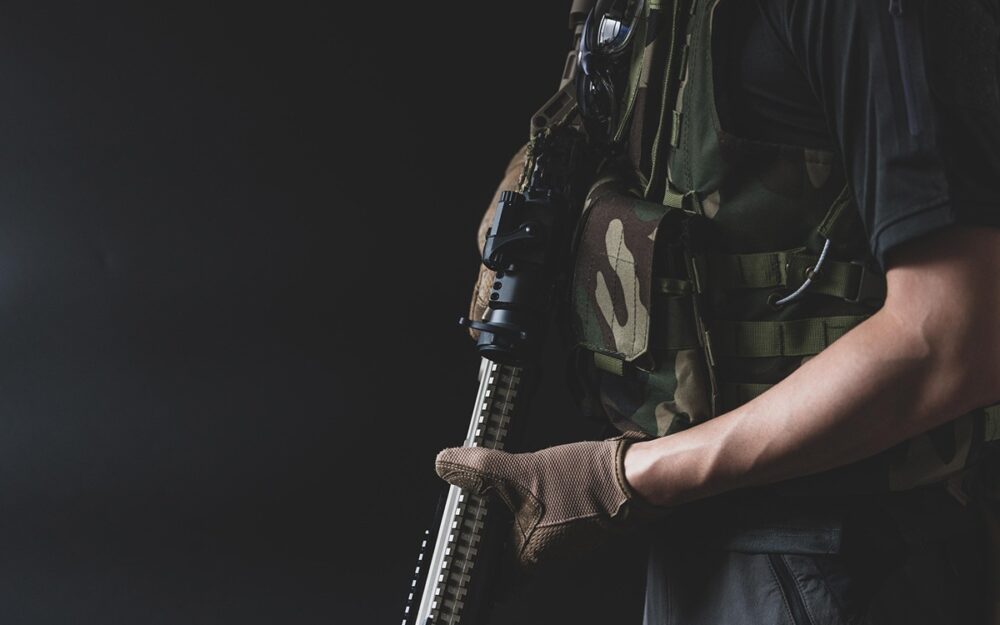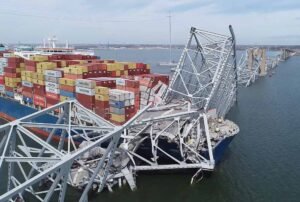
Founded in March 2009, the Oath Keepers are an anti-government far-right militia group comprising former law enforcement, first responders, and former military who pledge to defend the United States against government tyranny at all costs. Members of the group participated in the January 6th insurrection, and at least 29 have since been charged for their participation. Recently, the founder of the Oath Keepers, Stewart Rhodes, was arrested late last month on seditious conspiracy charges and sentenced to 18 years for his role in the insurrection. Another member also pled guilty to obstruction in connection to January 6th in early June.
In recent years, the group, labeled by the Southern Poverty Law Center as right-wing extremists, has been painting a different picture of itself—as a disaster relief organization. Of course, this help is welcome for vulnerable populations as first responders are critical during climate disasters, but disaster response creates more opportunities for these groups to exert power. When federal failures and other systemic gaps prevent those impacted from getting the support they need, groups like the Oath Keepers can see an opening to push anti-government sentiment and strengthen their numbers.
Militia Groups’ Recruitment Strategy
Militia groups often appear before federal agencies after natural disasters. For example, quickly getting on the ground to distribute food, conduct rescue operations, and fundraise, the Oath Keepers showed up in full force in 2017: when Hurricane Maria hit Puerto Rico, Hurricane Irma hit Florida, and Hurricane Harvey hit Texas.
When federal failures prevent those impacted from getting the support they need, it creates a perfect opportunity for groups like Oath Keepers to push anti-government sentiment and strengthen their numbers.
During California’s 2022 Oak Fire which burned large parts of the Sierra National Forest, a local group named the Echo Company militia gave out food to evacuees. Witnesses also say that they set up a de facto checkpoint and were always seen in military-style clothing, which is a recruitment tactic, reported CNBC. During Oregon’s 2020 wildfires, illegal roadblocks run by armed local militias stopped people fleeing Multnomah County to escape danger zones, the Guardian reported. Evacuees were asked to identify themselves and asked about their connection to the area. Actual law enforcement looked the other way. In neighboring Corbett County, the sheriff sergeant noted that armed civilians taking pictures of license plates and cars could be a resource for police.
Even though the group portrays itself as supplementing federal agency efforts, they use these opportunities to learn the government’s weaknesses and push for its collapse when the moment presents itself.
Growing Activation
In addition to trying to grow numbers, local militia groups are attempting to expand how they train for combat. Earlier this year, Vermont passed a bill that bans owning and running paramilitary training camps, the Associated Press reports. In 2020, residents of West Pawlet, located in the southwestern part of the state, started to speak out about the paramilitary training operation named Slate Ridge, a 31-acre center for professional gunfighting and military-style training.
From 2016 to 2020, town residents have had numerous confrontations with the property owner Daniel Banyai and groups of armed men training there. At the time, Slate Ridge social media revealed underground dugouts loaded with firearms and ammunition. Social media accounts linked to the training facility also showed members who confirmed their membership in anti-government and local militia groups. VT Digger reported that despite Banyai having two gun felony charges pending in New York at the time and not having the proper zoning permits for some of the structures on the property, Slate Ridge was still operating.
Sign up for our free newsletters
Subscribe to NPQ's newsletters to have our top stories delivered directly to your inbox.
By signing up, you agree to our privacy policy and terms of use, and to receive messages from NPQ and our partners.
While the 2021 January 6th insurrection is the most vivid example, various militia groups have heavily pushed against pandemic safety precaution measures and confronted racial justice movements.
In North Carolina, an LLC called Alottabang has been trying to open an explosives disposal training facility in Robeson County. The facility would sit on a portion of a 610-acre swamp land along the southern border of the state line. But while residents and town officials are working to oppose dangerous militia operations, the town is also protecting itself from environmental harm. NC Newsline reports that the explosive training facility would contaminate groundwater, drinking water supplies, creeks, and other waterways for the county and possibly the entire state. Significant noise pollution could also harm the area as sound from explosions could reach 115 decibels—the same noise level as a sandblaster.
A Dangerous Rise
Local militia groups have a broad range of beliefs and values. As Amy Cooter reports for Scientific American, some identify as “grown-up Boy Scouts,” while others are violent and seek to advance extremism and White supremacy. While the 2021 January 6th insurrection is the most vivid example, various militia groups have heavily pushed against pandemic safety precaution measures, confronted racial justice movements, or even acted as border patrol.
In May, migrants were confronted by the right-wing militia group Veterans on Patrol at the US–Mexico border near the Sasabe Port of Entry. The militia has two operation camps, one of which is in Sasabe. Reports obtained by the Southern Poverty Law Center reveal that Veterans on Patrol believe their work is sanctioned by God and that they are therefore exempt from having to comply with state and federal laws.
What also makes the rise of these groups dangerous is that they are made up almost entirely of White men who push nationalist views and want to return to “better times.” Sociologist Amy Cooter refers to this as “nostalgic groups” who wish for the time when minority groups and women were second-class citizens and had little power. These groups, mainly when acting as first responders, can intimidate grassroots justice-centered action and exploit communities’ vulnerability—due to climate disasters, undocumented status, or the threat of racialized and gender-based violence—to grow their ranks.
The Carnegie Endowment for International Peace has outlined six factors that will create opportunities for violent nonstate actors, including militia groups, de facto states, and insurgencies. The six factors are:
- Food, water, and energy crises that undermine state capacity and legitimacy
- More environmentally inhospitable areas
- More invidious restrictions on resources
- Higher demand for people smugglers and armed border guards
- Chaos and injustice after climate-exacerbated disasters
- Anger at those responsible for climate change
These factors, all attributed to climate change, will create the conditions needed for the militia groups to grow as shifts in ideological movements, demographics, and government efficacy continue.
There are actions that governments, organizations, and movements can take to counter extremist activities, both upstream and downstream. But experts warn that unless civil society takes a stronger stance in curbing local militia groups’ power, compounding water, food, and energy crises have the potential to allow these groups to thrive in the vacuum left by an ineffective civil response.












